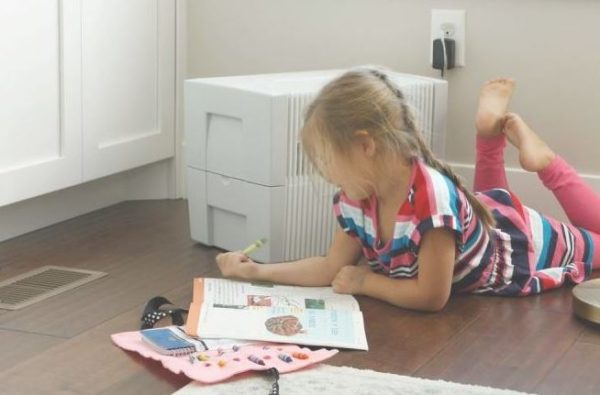Back to school season can be a tough time for students who suffer from asthma. We’re covering why your child needs an asthma action plan this year.
Asthma is the most common chronic illness among children, accounting for roughly 13 million missed days of school a year. While children are at home during the summer months, they are exposed to a less threatening environment, as they have better control over the presence of asthma triggers. Parents and physicians are more readily available as well. Returning to school can be a shock to asthmatics, as they are often exposed to more triggers than they are at home. To be better prepared this school year, we’re covering why your child needs to have an asthma action plan.

As we mentioned in a previous blog post, air quality in schools and classrooms can be less than comfortable. Many schools across the country do not have updated ventilation systems and create poor breathing environments for students and teachers. This is a huge problem for sensitive groups, particularly asthmatics. As the American College of Allergy, Asthma and Immunology reports, asthma is one of the most common reasons, if not the number one reason, why children miss multiple school days a year.
When students are forced to stay home due to severe asthma symptoms, it also prevents them from getting involved in sports and after-school activities. It’s important for young kids to be involved in these types of school activities and shouldn’t be limited due to debilitating asthma, especially if there are preventative measures that can be taken.
Creating an Asthma Action Plan

More than anything, having the necessary information in the hands of the right people is the most proactive way to ensure your child’s asthma action plan is effective. The Asthma and Allergy Foundation of America has a great handout that can be filled out and given to school administrators. Find the guide here: Asthma Action Plan
In addition to the written-out guide, communication and knowledge are key to making sure your child is safe this school year. Follow this guideline to get started on your asthma action plan.
Know the Triggers
Be aware of what your child’s unique asthma triggers are, and make sure they are aware as well. Write this information down to provide to your child’s teacher and school nurse. It’s better for you, your child, and their teachers if they are aware of the potential risks of certain activities ahead of time. For instance, if you know your child is especially sensitive to animals or hay, they could have a potentially tough time on the next school field trip to the farm and the school may offer an alternative opportunity.
Have the Proper Medication on Hand
Discuss with your child’s asthma specialist what the proper medication is that your child will need to have. Clear it with their school officials to have on hand in case of emergencies, especially when it comes to field trips when unexpected triggers may be present.
Practice Emergency Situations
Children often respond well to learning from role-playing situations, so it doesn’t hurt to practice what to do in an emergency situation. This of course ties into the previous tips, because they need to know what their triggers are and what medication they need to have.
Don’t Copy Another’s Plan
Everyone’s experience with asthma is unique, so don’t copy someone else’s asthma action plan. Make sure yours is unique to your child’s so they can get the care and treatment that is necessary when need be.
Staying Healthy at Home

While you have little control over the air quality and environmental factors in your child’s classroom, you can do your part in making your home a healthy and comfortable place for them. Create the clean air environment your child can thrive in by eliminating airborne pollutants like dust and allergens. Venta’s humidifiers naturally reduces harmful pollutants in the air at a humidity level of 40-60%, leaving your air perfect for breathing.
While the humidifier is ridding your indoor air of irritating pollutants like pollen, the air is being perfectly humidified by Venta’s cold evaporation system. The unit adjusts to your indoor environment’s relative humidity and only releases the amount of moisture your air needs, never more. This prevents mold and mildew growth from too much humidity, which can be asthma triggers.
Air quality at home and at school should never be overlooked when it comes to an asthmatic child. Providing the best indoor air quality to live and learn is essential and having an asthma action plan is a critical component to asthma attack prevention. By communicating and staying up-to-date on medications and best practices, your child is on a positive path to a healthy school year.

